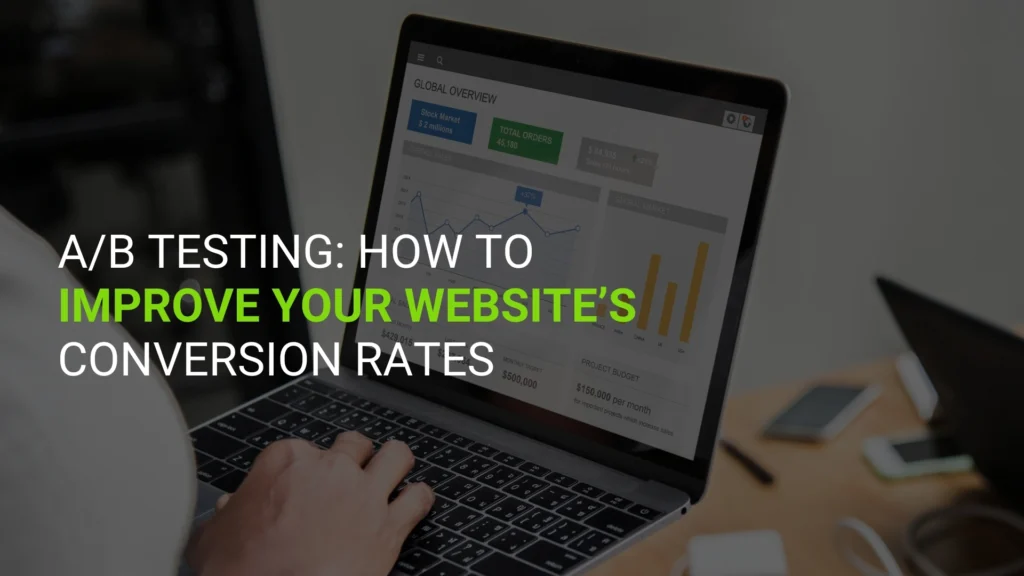A/B testing has become particularly effective in increasing website conversion rates in sharp competition in online advertising. If you seek more subscriptions, purchases, or simply more attention on your website A/B testing provides valuable information that will change your practice. In this article, let’s look at how A/B Testing is effective and can be enhanced.
What is A/B Testing?
A/B testing, or split testing, implies comparing two variants of a particular webpage or an element on the webpage. It allows marketers to test things like headlines, CTAs, and elements of a color scheme to determine how best to increase conversion rates. For example, a change of a single word on the CTA might cause a considerable boost in user interactions.
Why A/B testing for Websites?
Most of the website’s conversion rates are vital in determining the success of the digital marketing strategy. Instead of guesswork, marketers and other businessmen can use the results of A/B testing to guide them to the right choice. Using the A/B testing method assists in determining what it does for your audiences and creates better experiences, embracing higher conversion rates. A/B testing for websites is particularly effective in:
1. Landing Page Optimization: Testing elements such as headlines and images.
2. Improving Conversion Rates: Analyzing and defining strategies based on user behavior.
3. Boosting Sales: After a thorough analysis determine the best content or layout.
Strategies To Implement an A/B Test
To make the most out of A/B testing, follow these strategies:
Define Clear Goals: Know your goals before you begin in this case, this involves knowing what you want to realize. For instance, do you wish to increase the percentage of visitors who sign up, buy a product, or download an application?
Test One Element at a Time: Adjusting several components at once produces confusion about the outcome. Concentrate on one aspect, for instance, a headline or the color of the button.
Use Reliable Website A/B Testing Tools: Optimize, Google Optimize, and VWO can help to streamline the work as well as offer statistics.
Run Tests for an Adequate Duration: Just make sure the test should run long enough to give you statistically valid data.
Analyze and Implement Findings: Use the data to make informed changes to your website.
Examples of A/B testing for Conversions
1. Call-to-Action Buttons: One SaaS company experimented with CTAs and it introduced a new CTA button “Get Started Today” that made a 25% conversion improvement in contrast to the usual “Sign Up” button.
2. Landing Page Design: An e-commerce site increased sales through experiments on the kinds of pictures and descriptions of products thus recording a 15% increase in sales.
3. Email Sign-Up Forms: A blog was able to increase its subscriber list by 20% by testing the forms, both placement and length.
A How-To Guide for A/B Testing for Websites
1. Identify the Problem: Identify those sections of your website that are giving poor results or conversion rates.
2. Create Variants: Create a modified version of the element that you want to consider as a part of the experiment.
3. Set Up the Test: Engage the use of A/B testing tools to divide your audience, and make different versions available for display.
4. Collect Data: Track values including click-through rates (CTR), bounce rates, and conversion rates.
5. Analyze Results: Find out which of the two versions performs better and why.
6. Implement Changes: Use the winning version on your website.
Key Findings for A/B Testing in Digital Marketing
Be Patient: You get what you work for, hasty work may lead to inaccurate conclusions.
Focus on High-Traffic Pages: Begin testing on pages that receive more traffic so that faster and more accurate results are obtained.
Avoid Bias: Choose your test audience samples in a way that will give a sufficient sample of your target or intended users.
Document Your Findings: Ensure documenting things that proved effective so that you can refer to them in the future.
Increasing Website Conversions Through A/B Testing
A/B testing is not a one-time activity. The main benefit of conducting these tests constantly is maintaining website relevancy due to ever-shifting user preferences. Using effective A/B testing strategies, businesses can continuously achieve higher website conversions and stay ahead of their competitors.
Conclusion
A/B testing must be considered an extreme of conversion rate optimization. It will help you implement a plan effectively to achieve the business objectives within an organization or business. Optimizing tools to work on a website and following A/B testing will go a long way in enabling your website to become a conversion giant.
Read also – The Power of Instagram for Building Brand Awareness

